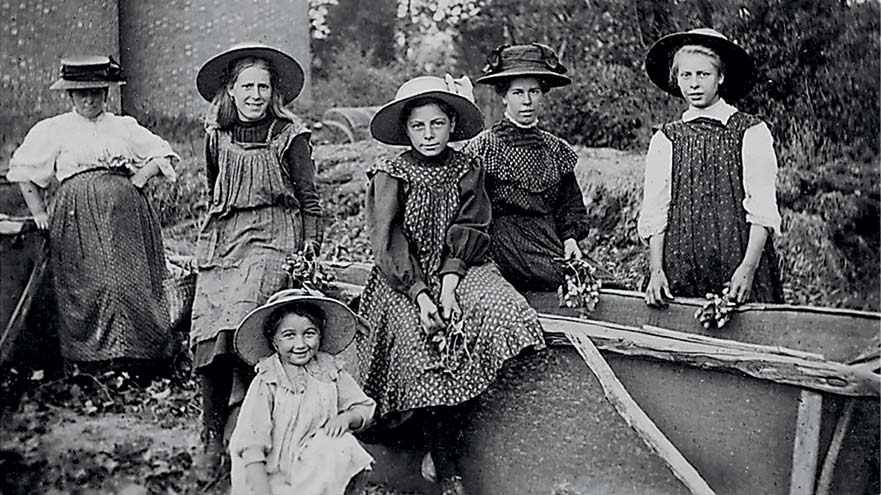For decades, as the summer drew to a close, families from London’s East End and further-flung cities would descend on Kent in their droves.
Boarding ‘hoppers’ specials’ trains at London Bridge, they came to pick the flowers that flavoured the nation’s beer, swapping the smoggy city for green fields and fresh air.
But as cheap imports grew, and mechanical pickers replaced human hands, the hoppers disappeared.
The rails they used to ride, the 11 miles of the Hawkhurst Branch Line, followed close behind.
However, an historic environment assessment now under way has raised hopes that new life might be breathed into the old line shut down in 1961.
Peter Dartnell, a former member of the Hop Pickers Line Heritage Group, said: “The group, set up to try and maximise the line in whatever way possible, has been granted about £5,000 by the borough council to conduct an archaeological survey of the whole line.
“It’s an important part of our heritage, and there’s the possibility of it becoming an important tourist asset for Tunbridge Wells and the surrounding areas.”
Before the tracks were taken up, they connected Hawkhurst, Cranbrook, Goudhurst, Horsmonden and Paddock Wood, and various options have been considered for the best way to put the old route to recreational use, including converting it to a cycle path or bridleway.
Scheme
The exact nature and scale of the project will not be determined until after the survey has been completed.
What seems certain is that the route will be marked and its history celebrated by a wayfinding scheme.
Part of the old route crosses what is now Knells Farm solar farm in Paddock Wood, and the developer, energy company Big60Million, were only allowed to build there on the condition it recognised the former railway line.
A Tunbridge Wells Borough Council (TWBC) spokesman said: “The developer is, with the help of TWBC and the Hop Pickers Line Heritage Group, responding to that condition by commissioning a designer to design way marking and interpretation material.”
The historic environment assessment is due to be completed by mid-January, after which the hoppickers’ line may once again become a rich vein running through the heart of Kent.
THE HOPPIEST DAYS OF THEIR LIVES?
Though hop-picking was commonly known as a ‘Londoner’s holiday’, camps were cramped, latrines shared, wages low and days long.
George Orwell came hopping in Kent in September 1931 and described the various challenges pickers faced.
He said they were given printed rules when they start ‘designed to reduce a picker more or less to a slave’.
They slept in ’round tin huts about ten feet across, with no glass in the windows, and all kinds of holes to let in the wind and rain’.
Hands were ‘stained black’ and ‘scratched to bits by the stems of the vine’, with pickers on their feet for ten hours a day.
Laws on child-labour were ‘utterly disregarded’ and some pickers ‘drove their children pretty hard’, with some as young as six sleeping where they dropped on the ground.
And though theoretically possible to earn a decent wage, this was ‘impossible’ in practice, with a ‘piece-work’ payment system disguising the low rate of pay.








